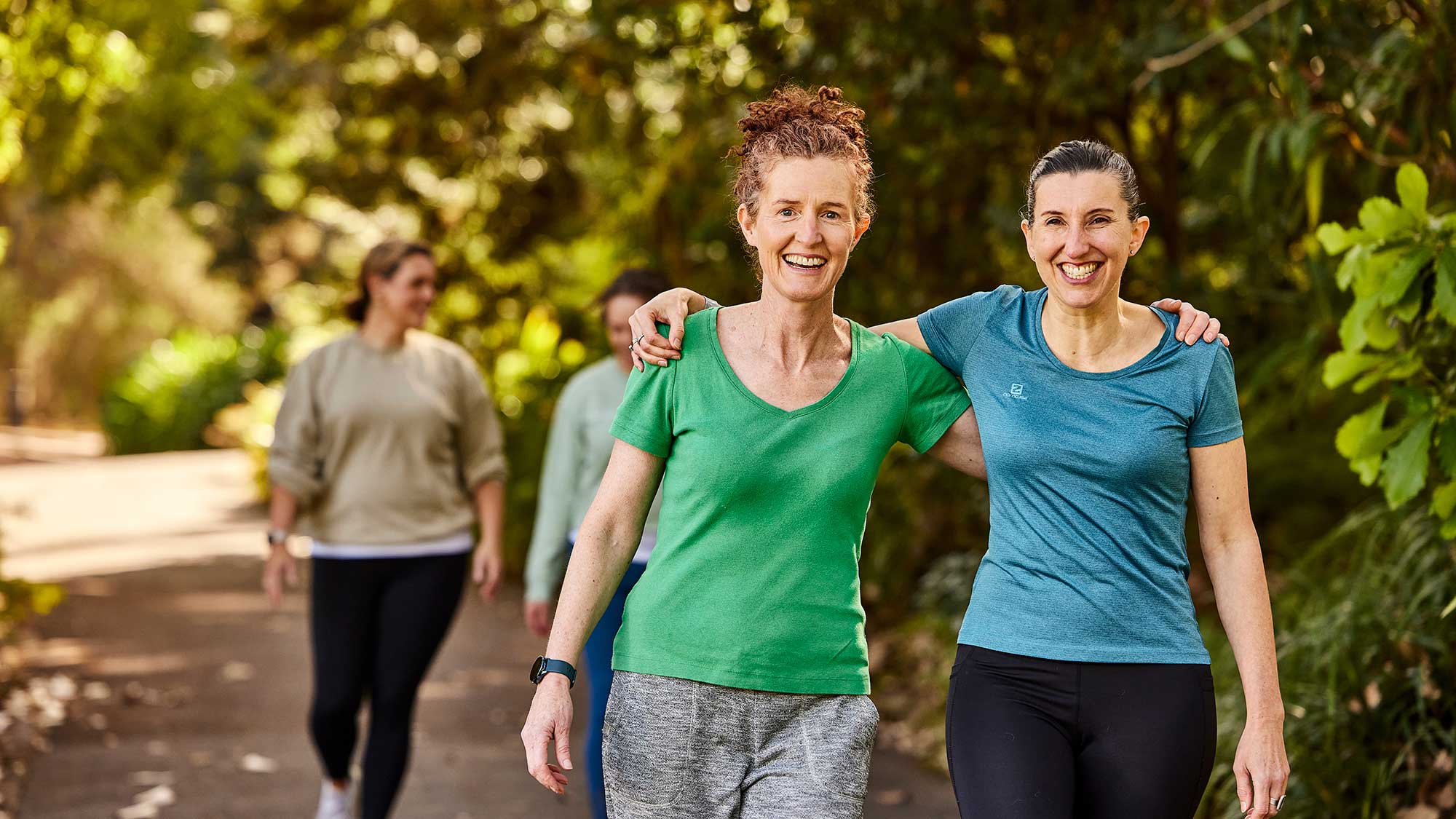
Physical activity resources
Health professionals
Walking for an average of 30 minutes or more a day can lower the risk of heart disease and strokes by 30% percent, and Type 2 diabetes by 40%.
Physical activity resources for health professionals
- Heart Foundation Walking: A social prescribing opportunity for all your patients. Visit our dedicated website to learn more about our walking groups and Personal Walking Plans and request flyers for your practice.
Heart Foundation’s Blueprint for an Active Australia: Government and community actions needed to increase population levels of physical activity and reduce sedentary behaviour in Australia (third edition).
Australia’s physical activity and sedentary behaviour guidelines: National physical activity recommendations from the Department of Health and Aged Care.
Physical activity resources for your patients
The following pages provide tips and education to help your patients get more active.
- Getting started with physical activity
- Physical activity and your heart health
- Physical activity and exercise - information on getting active, sitting less, active families, and active workplaces and communities
- Types of physical activity
- Sitting less guidelines for adults - PDF
- Sitting less guidelines for children - PDF
- Sign up to Heart Foundation Walking program
- Being active after a heart attack - information patients need to know about being active after a heart attack
- What is cardiac rehab?
Built environment resources for professionals
Residents of walkable communities are 1.5 times more likely to engage in sufficient physical activity and 58% more likely to have a favorable cardiovascular risk profile compared to those in less walkable areas . These findings underscore the importance of healthy built environments in fostering active lifestyles for people living in Australia, making physical activity more accessible and enjoyable as part of everyday life.
Healthcare providers play a crucial role in promoting the connection between the built environment and heart health, advocating for initiatives that support active living. The Heart Foundation offers resources such as the Community Walkability Checklist and the Healthy Active by Design toolkit to empower communities and professionals in creating environments that prioritise physical activity and well-being, facilitating collaboration with local councils for neighborhood improvements. These tools integrate health considerations into urban planning, promoting healthier and more active local neighbourhoods and environments across Australia.
Visit Healthy Active by Design for more information.
References
You might also be interested in...

Getting active at school
By increasing physical activity at school, and by walking or riding to school, children are better able to meet their physical activity needs.

Built environment and heart health
Resources available to help guide in the development and advocacy for healthy, active places and spaces

Sit less, move more
You may be surprised to know that on average, adults sit for nine hours a day.
Last updated20 August 2024
Last reviewed20 August 2024